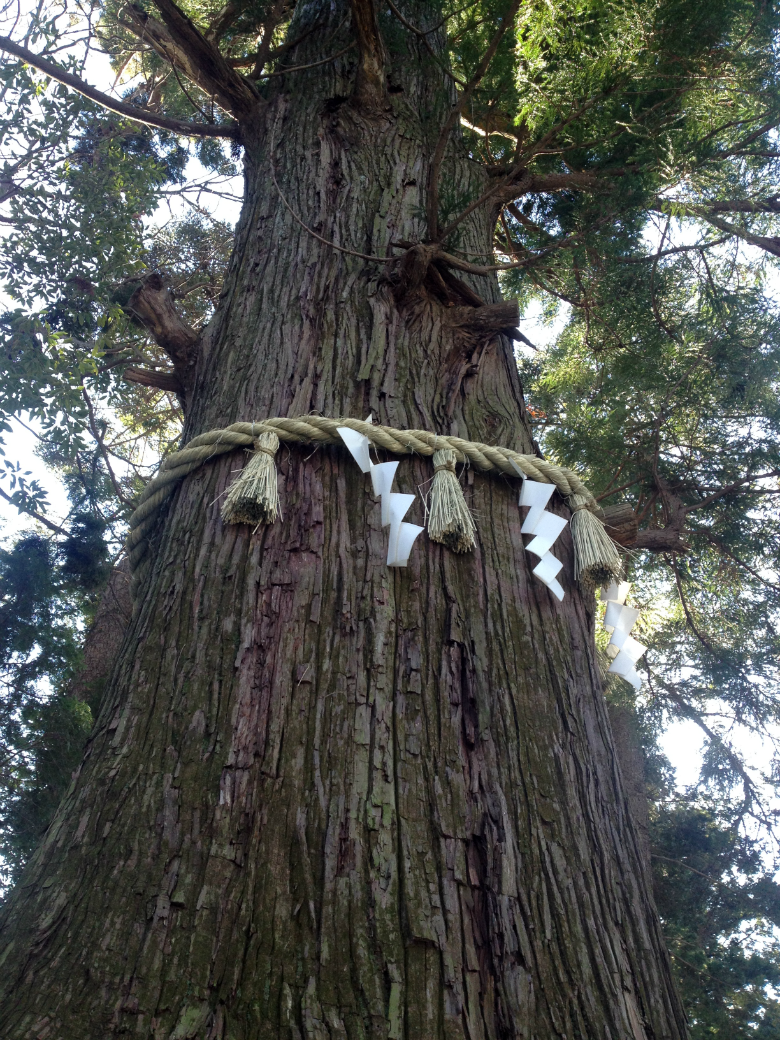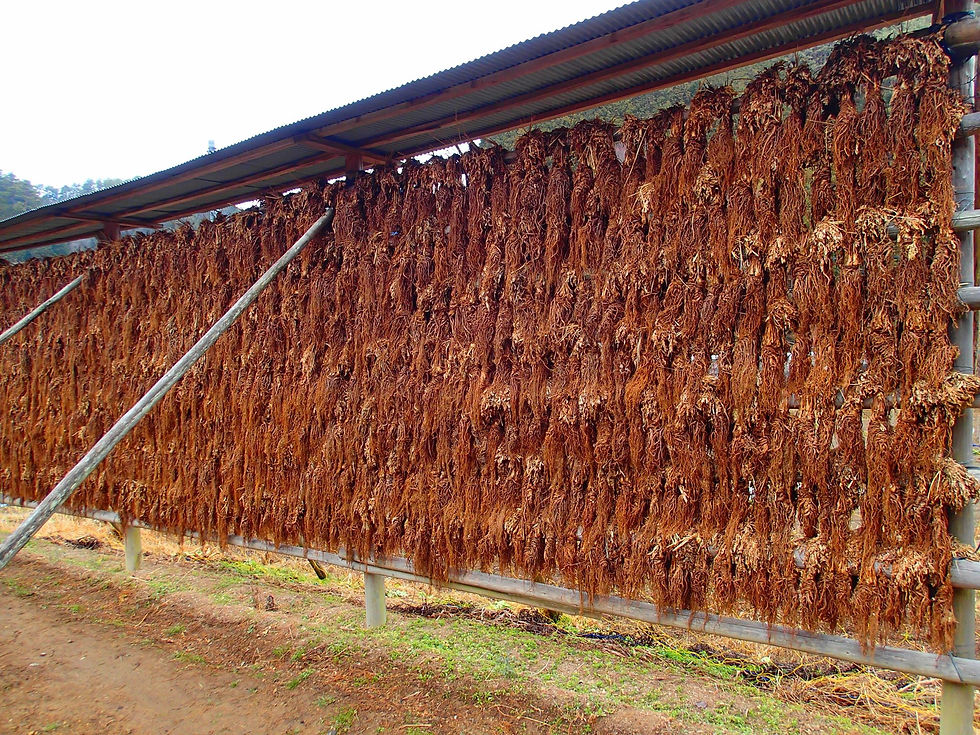After leaving Osaka, we made our way to the tiny secluded village of Higashifuki. The town, located less than 1.5 hours away from the dense and futuristic city, is home to approximately 300 people—most of whom are over 50 years old.
We visited this town to meet up with Hiroto Tanaka-san, a regional food and beverage expert, and learn more about traditional fruit, herb, fungi, and insect-infused alcohols. However, before our tasting, he wanted us to visit with his neighbors who keep the ancient art of hinokihimo alive.
We walked up to the road to Mr. and Mrs. Yanagi's home. Their plot of land is unmistakably a self-sufficient agrarian homestead. Terraced rice and vegetable fields surround their traditional Japanese-style farmhouse. Nearby outbuildings store neatly organized farming equipment like wheelbarrows, shovels, and harvesting baskets. Stands of cedar and cypress line the property's perimeter, while old gnarly ume and persimmon trees drop fruit and shade the pathways closer to the house in the warmer months.

After greeting us, they invited us into the woodworking shop adjacent to their home. Using Hinoki Cypress (Chamaecyparis obtuse), the couple (both in their early 80s) work as a team to shave down logs into thin pieces of string and paper. Before the days of plastic wrap, it was common for people to use kyogi paper and hinokihimo string and the leaves of plants to neatly package sushi and other foods.


In Japan, hinoki is a venerated tree with deep historical and cultural roots. Native to the central and southern parts of the country, the tree can grow up to 35 meters tall with a trunk 1 meter in diameter. For millennia, people have treasured hinoki for its timber, decorative foliage, and therapeutic essential oils.

Hinoki is more than a tree; it is a spiritual symbol. The wood is incredibly durable and resistant to decay. For this reason, it has been the preferred building material for temples, palaces, and shrines. And the wood does stand the test of time because the Horyuji Temple in Nara, Japan (a UNESCO World Heritage Site) contains some structures built from hinoki that are over 1,300 years old. They also happen to be some of the oldest remaining wooden structures in the world. People also use hinoki wood for making a variety of other things like fragrant wooden bathtubs (YES!), cooking utensils, tennis rackets, home décor items, cups, and much more.
Mr. Yanagi explained that hinoki wood is full of antibacterial and antifungal compounds. These compounds, which prevent the wood from decaying, are also what helps to preserve packaged foods. He pulled out a timeworn newspaper article explaining hinoki's effectiveness in fighting influenza to support his claim.

The strength of hinoki wood does not diminish even when he shaves the logs into millimeter thick slices. I know this because Mr. Yanagi made me play tug of war with him. We both pulled as hard as we could in opposite directions, and the strings did not snap!
Hiroto explained that before the proliferation of plastic, many people in rural Japan made and sold kyogi paper and hinokihimo string to supplement their income as rural farmers. Mr. Yanagi explained that before the 1950s, 50 or more people in the area knew the art of kyogi and hinokihimo. Now only two remain—Mr. Yanagi and his wife.
For Mr. and Mrs. Yanagi producing hinokihimo still brings in a viable income. Regional specialty food shops and grocery stores use kyogi and hinokihimo for packaging certain artisanal food items. Hiroto explained that he is doing his part in preserving this tradition. He has been working to connect Mr. and Mrs. Yanagi with local artists who use the thinly shaved wood slices to make decorative items like lampshades.
Mr. and Mrs. Yanagi were warm hosts. Our visit ended with a snack of homemade sun-dried sweet potatoes and persimmons. Walking back down the road to Hiroto's house, we crossed paths with a teenage boy who just left school for the day. We later found out that he is one of two junior high school students in the village. Hiroto explained that Higashifuki is shrinking, a common fate shared with many other rural communities dotting the Japanese countryside. Unless something changes, he thinks that within a few generations, the entire village will be abandoned. He explained that the local elementary school recently closed because no new children are being born.

As we arrived at Hiroto's home, the afternoon sun washed the village in a golden hue. Before going inside, we stopped to marvel at large bundles of dried herbs hanging on a wooden apparatus in his neighbor's yard. The native herb known as touki (Angelica acutiloba) is in the carrot family (Apiaceae). People grow this plant for its medicinal leaves and roots because it helps improve blood flow and circulation. Ironically, I bathed at an herbal onsen that morning, where the owners infused the natural geothermal mineral water with this herb.

The inhabitants of Higashifuki over generations have developed an intimate connection with the surrounding landscapes. This nuanced place-based ecological knowledge sustains people's lives and also generates cultural heritage. We need more people like Hiroto helping to preserve what is so quickly vanishing.


Opmerkingen